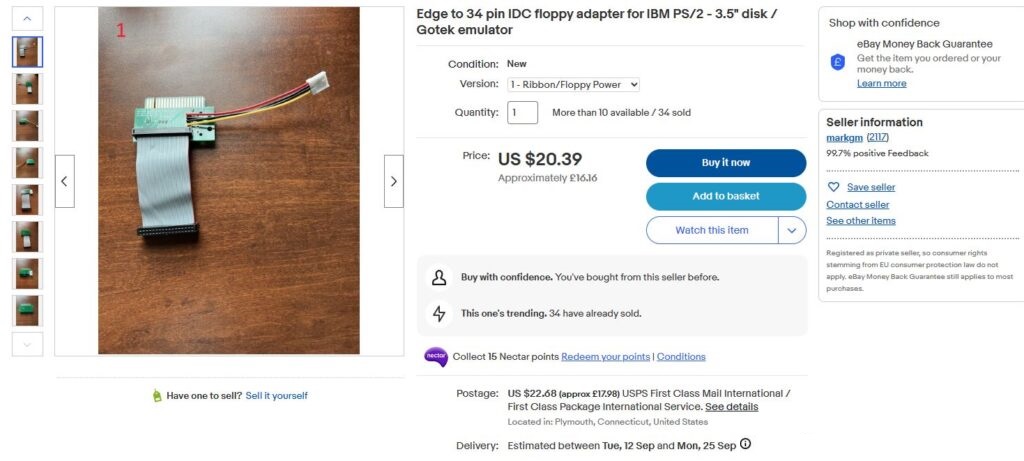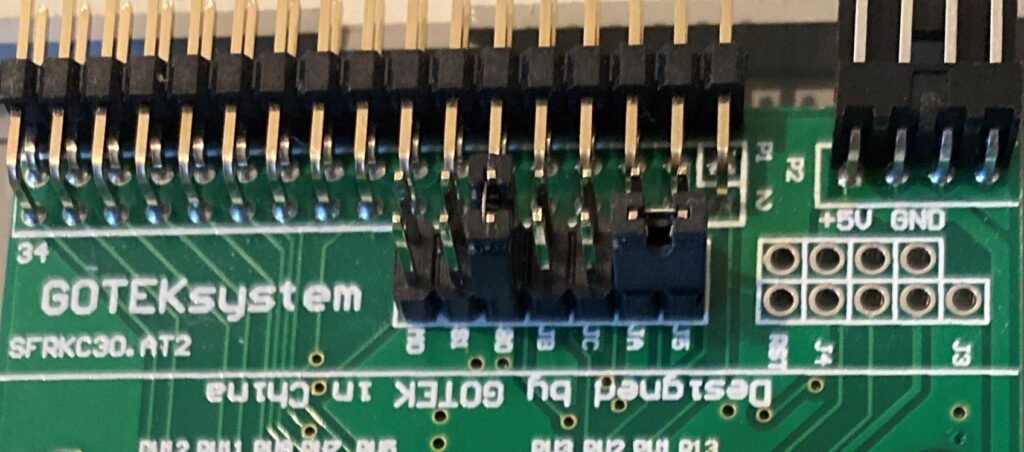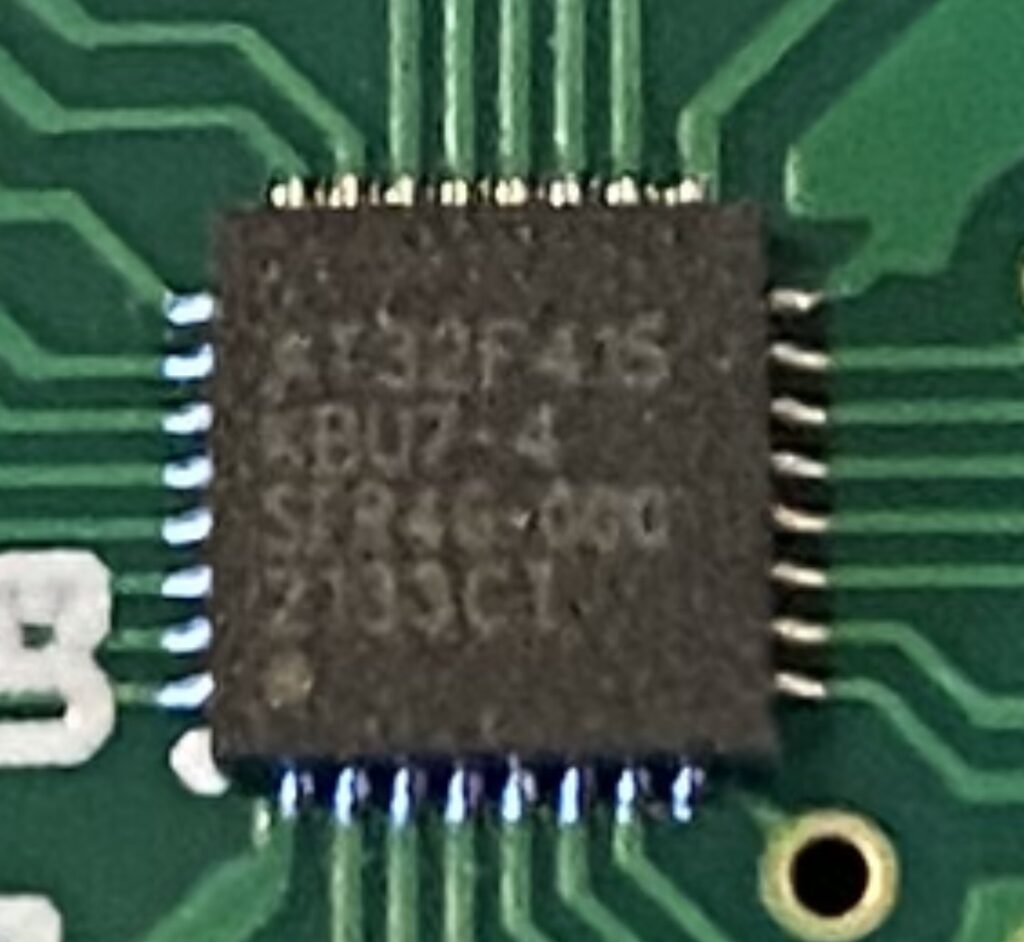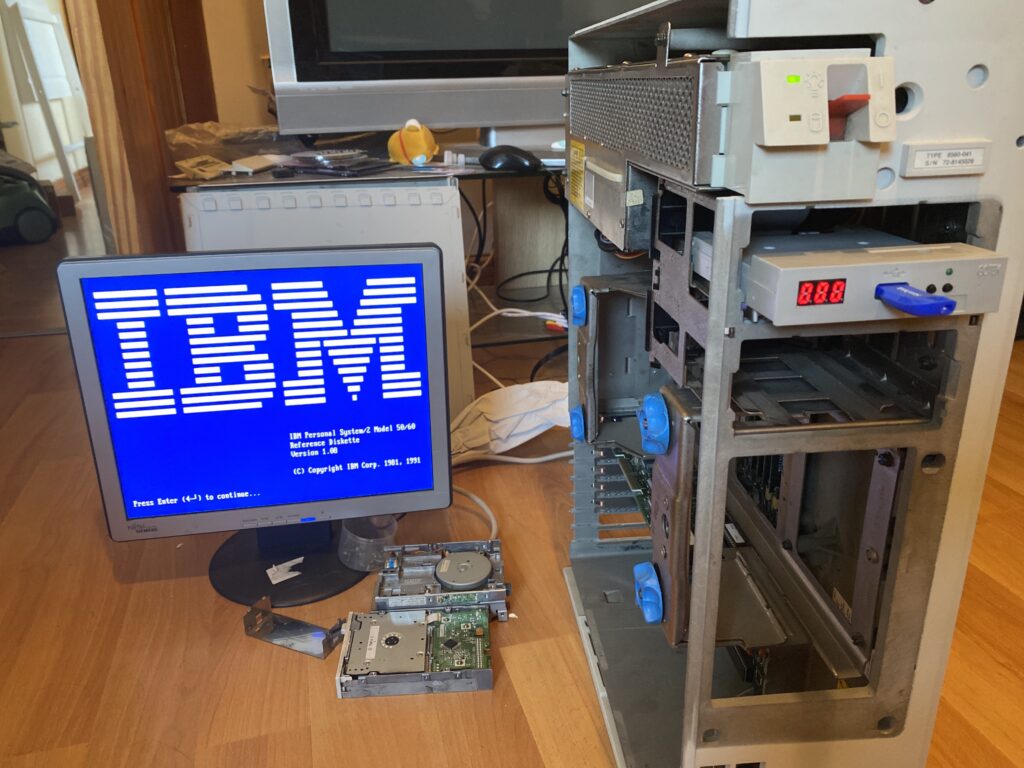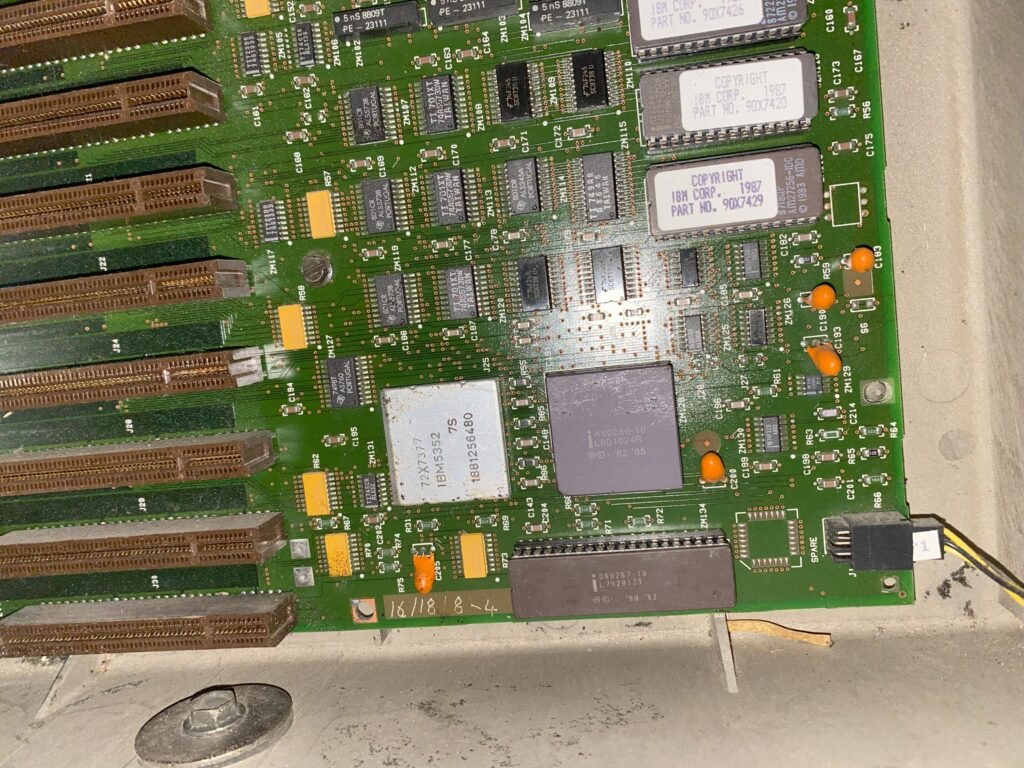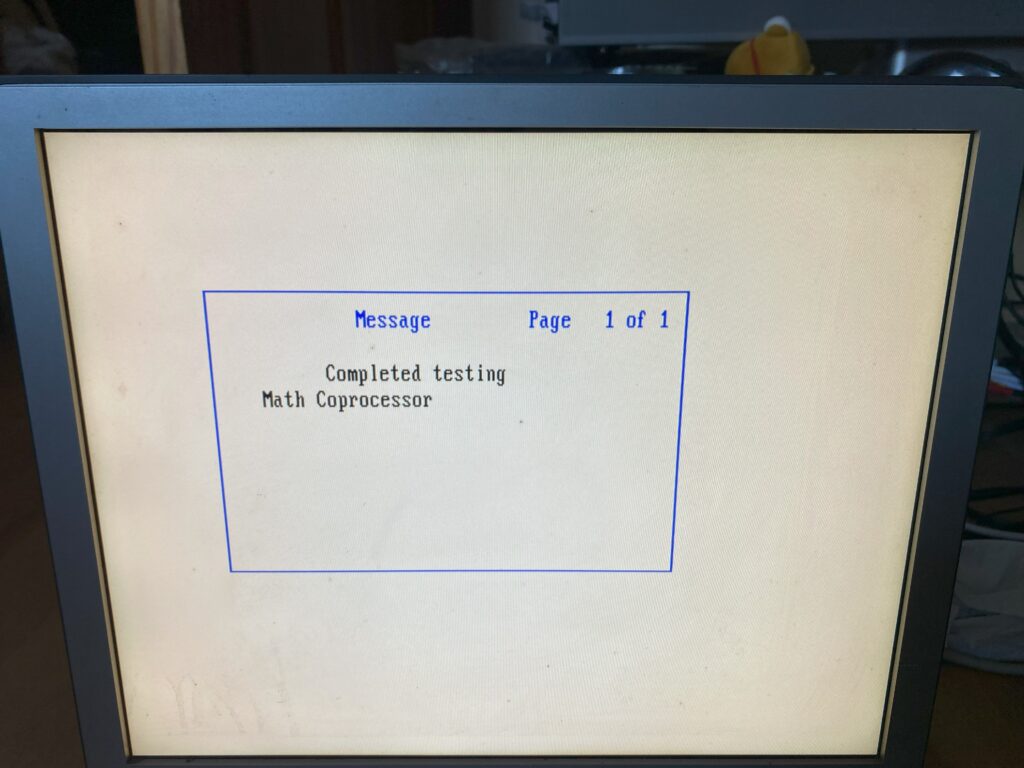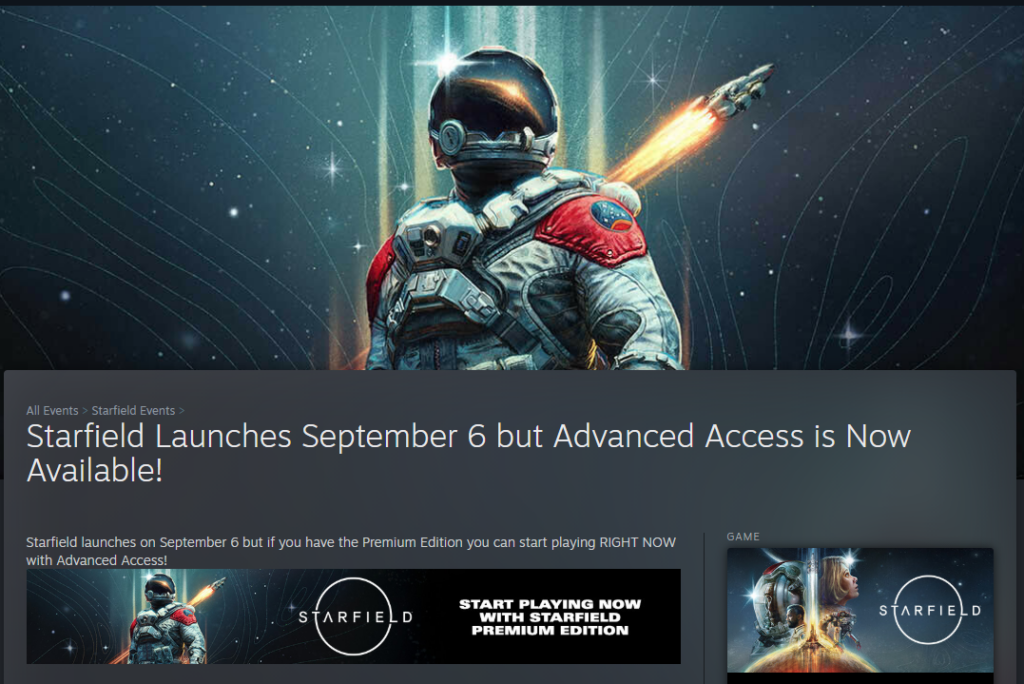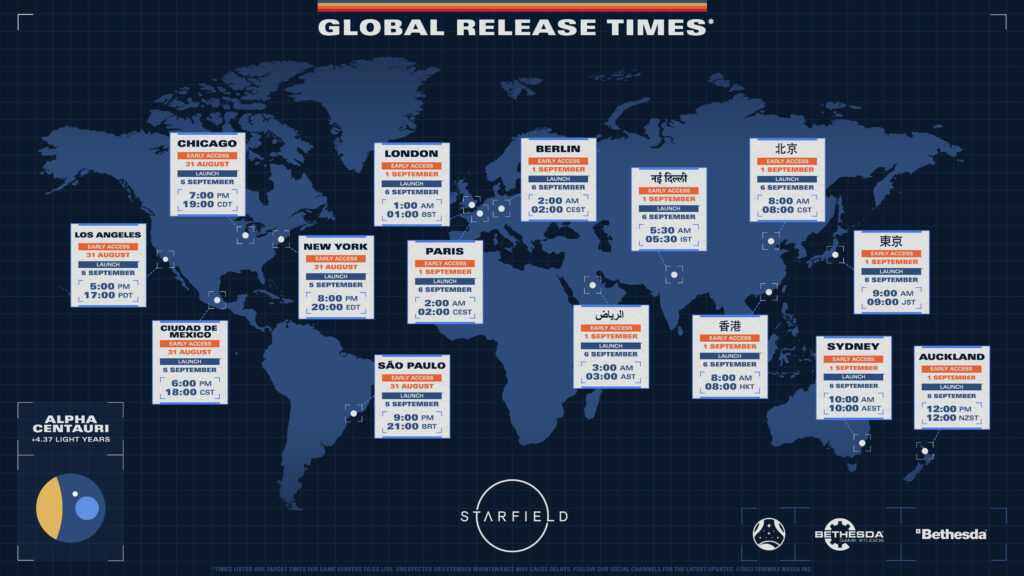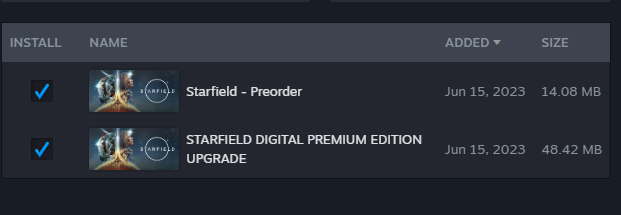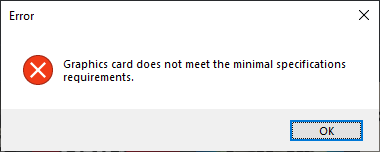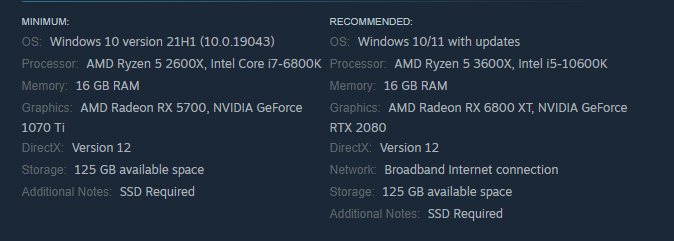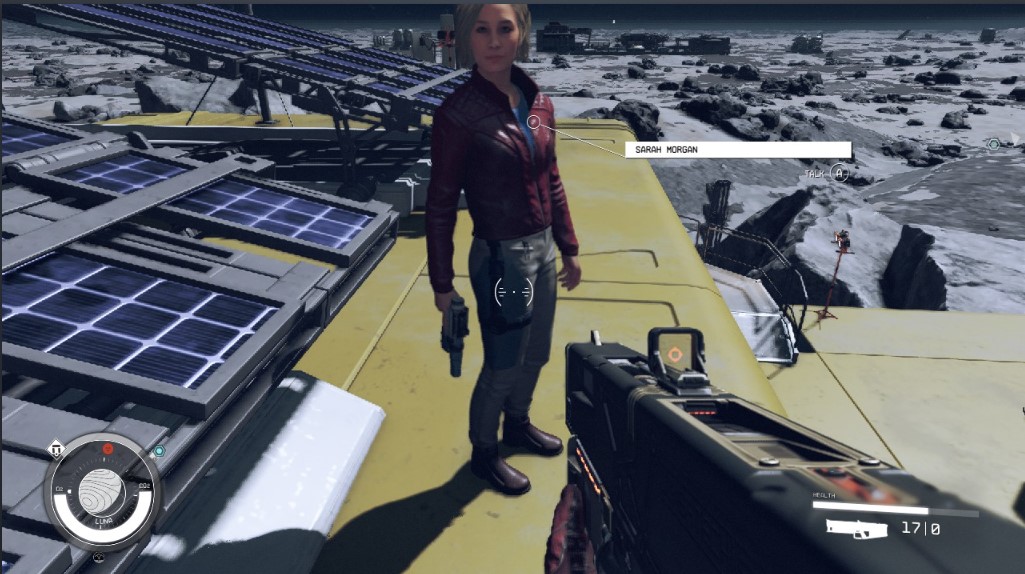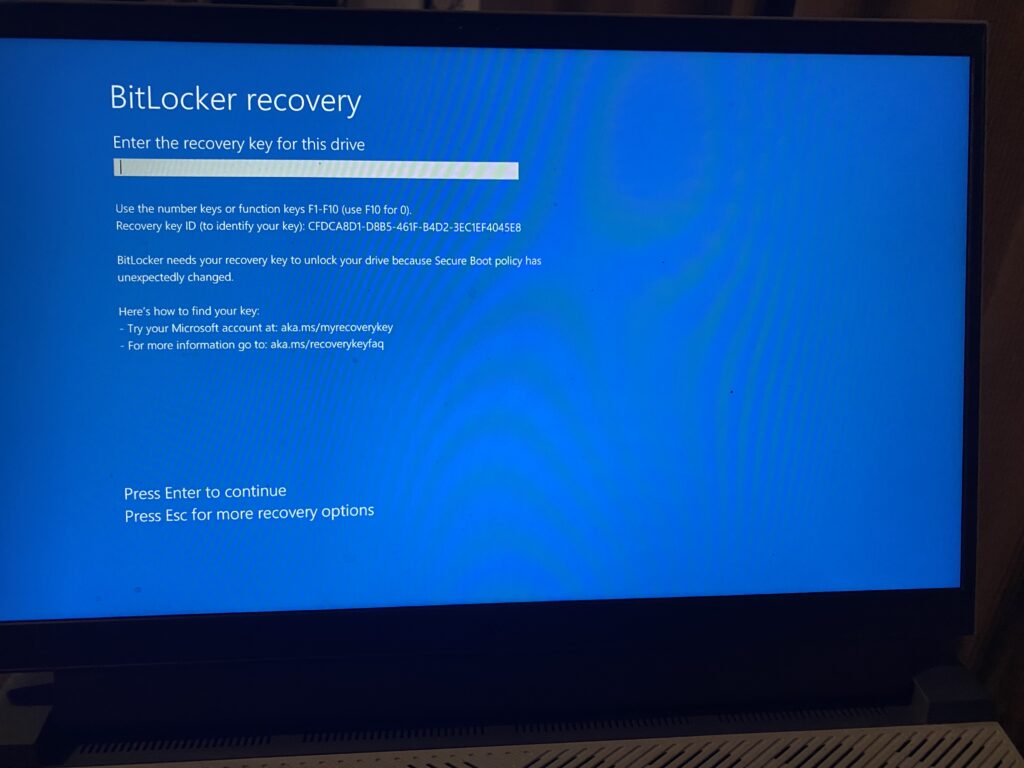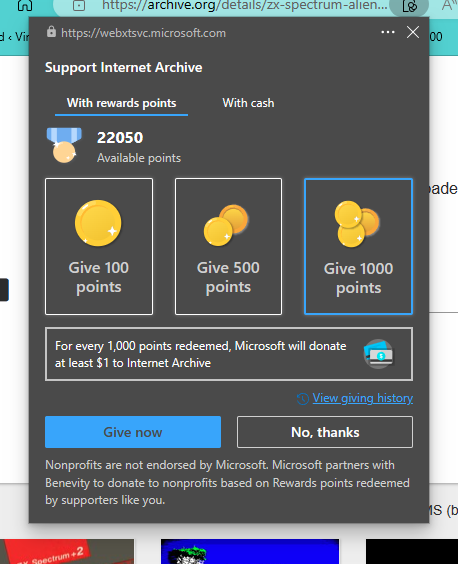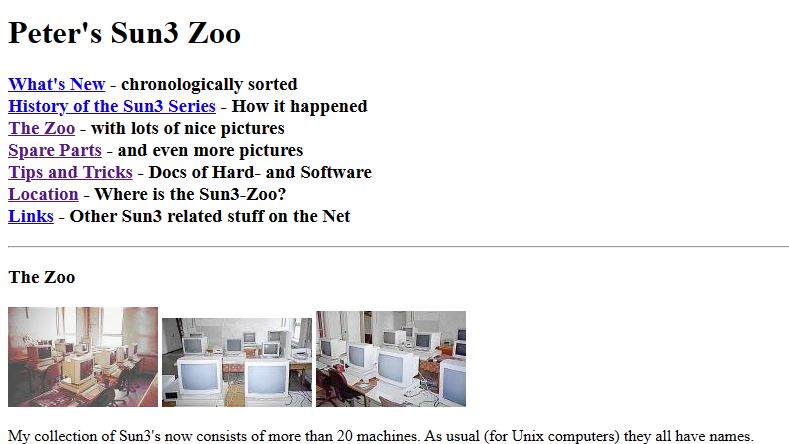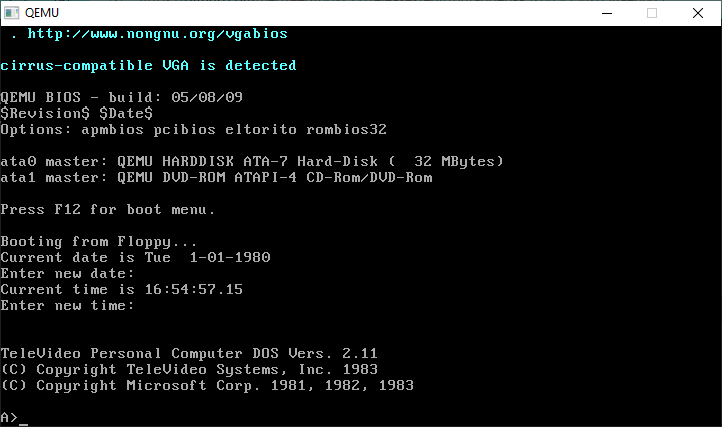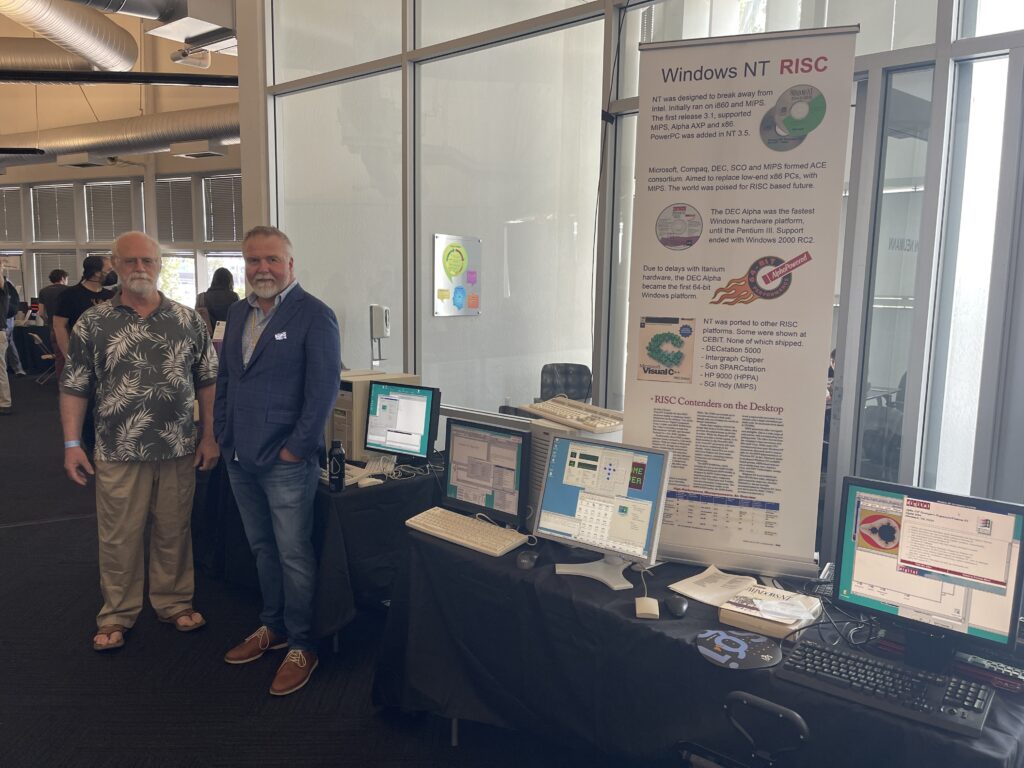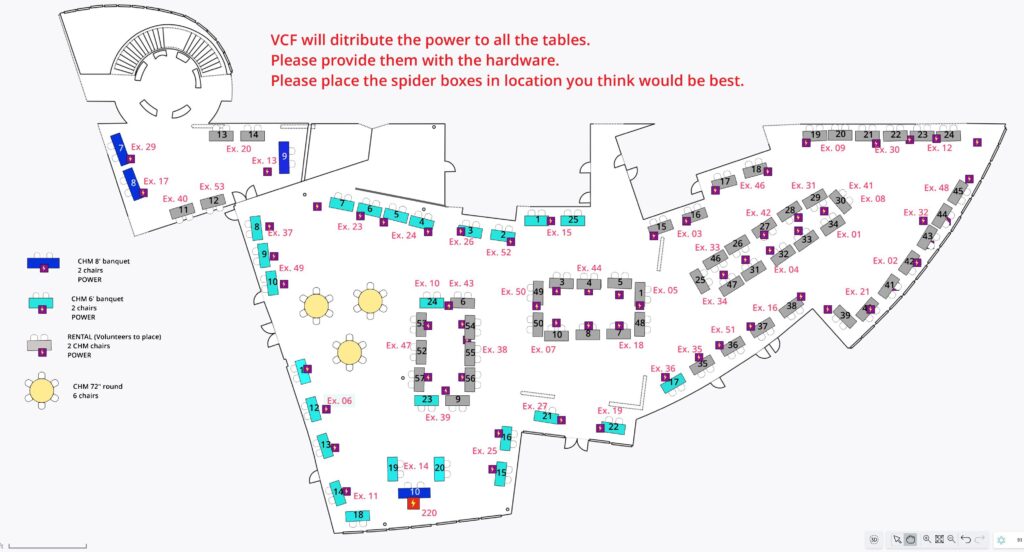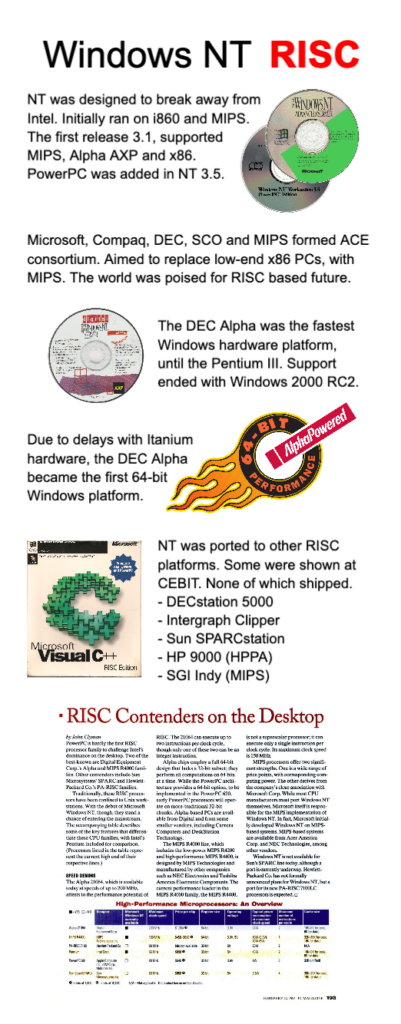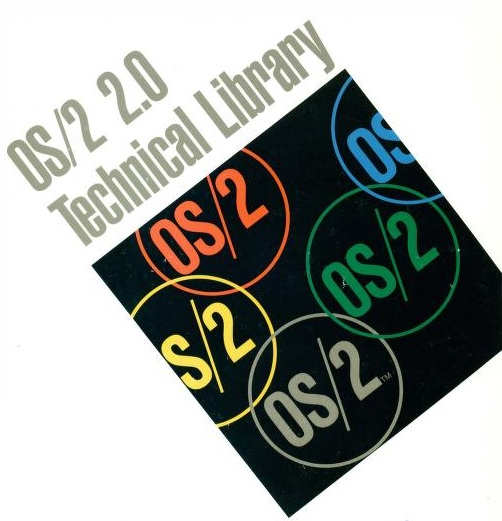As a follow up to Installing a Gotek floppy emulator, this time I’m adding something desperately needed, mass storage using a SCSI card.
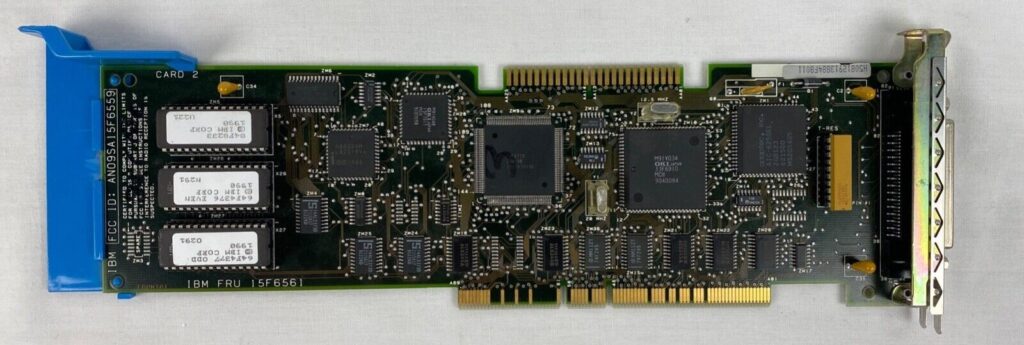
The machine is the 40Mb MFM based model, the cheapest option of getting a PS/2 model 60 back in the day. MFM hard disks are incredibly old, and sadly the eventual end point for these old disks is death. While I had investigated a MFM disk emulator they are very costly, with prices starting at $299 USD. Ouch. However, from my Dec Alpha experiments I do have the BlueSCSI was available for a more reasonable £52. So all I would need was a SCSI adapter, and I’d be good to go, right? Mostly.
Looking at the card, you can see that it doesn’t use a standard 50 pin connector. I guess it being the 1980s and IBM trying to re-capture the PC market by going all in with proprietary connectors, they used a 50 pin IDC connector to attach the 50pin SCSI ribbon cable. This would prove to be disastrous for me later on. I initially had no luck finding an original cable, while the SCSI cards themselves seem to be plentiful on eBay. I guess me buying 2 of them has triggered a lot of movement in the market. Another source of concern is that the 286 is 16bit, and the card is advertised as being 32bit, but rest assured the notched middle part seems to indicate that the card is 32bit/16bit compatible. I can attest it works in my PS/2 just fine.
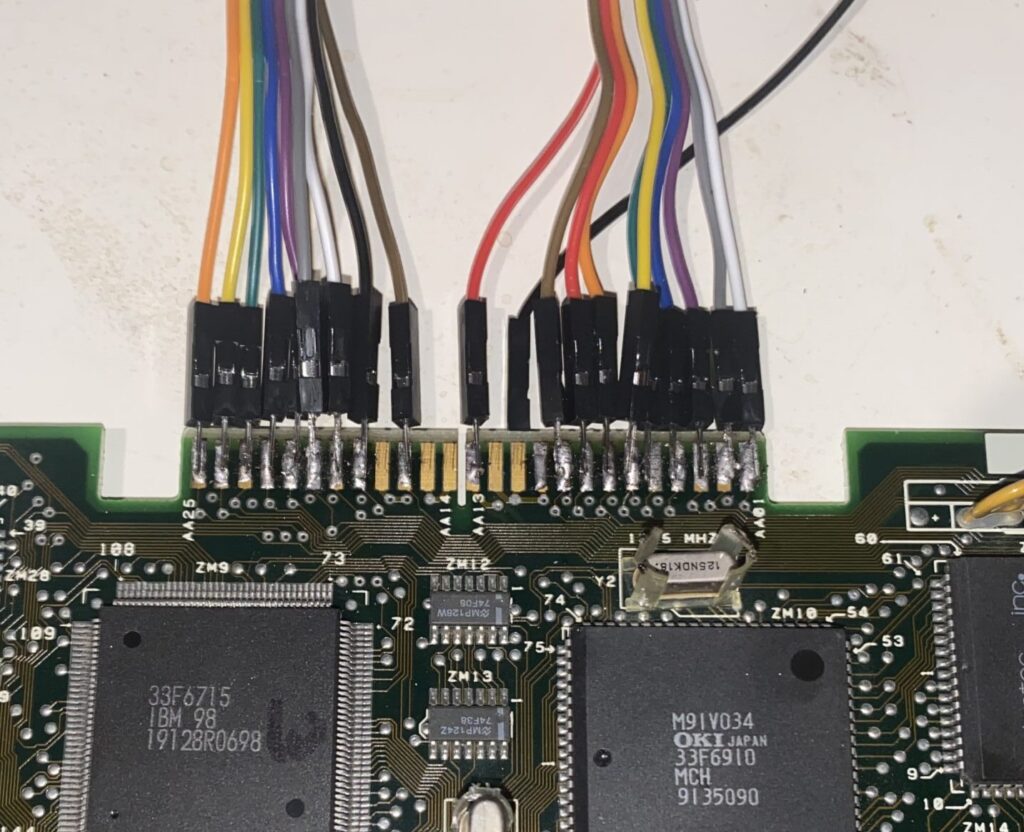
I had decided that since I do have a bunch of jumper cables, I could just solder them directly to the card fingers. I only have one device, so I don’t really need a ribbon cable, the BlueSCSI can emulate multiple devices, so I figured it’d be fine. Of the 50 pins in a SCSI ribbon more than half are ground, so I figured I only needed to solder up about 25 connections, just like how Apple got away with 25 pin connections. I did tone out the pins looking for the +5v power signal, along with checking the common ground, where the flip side of the SCSI card is all ground.
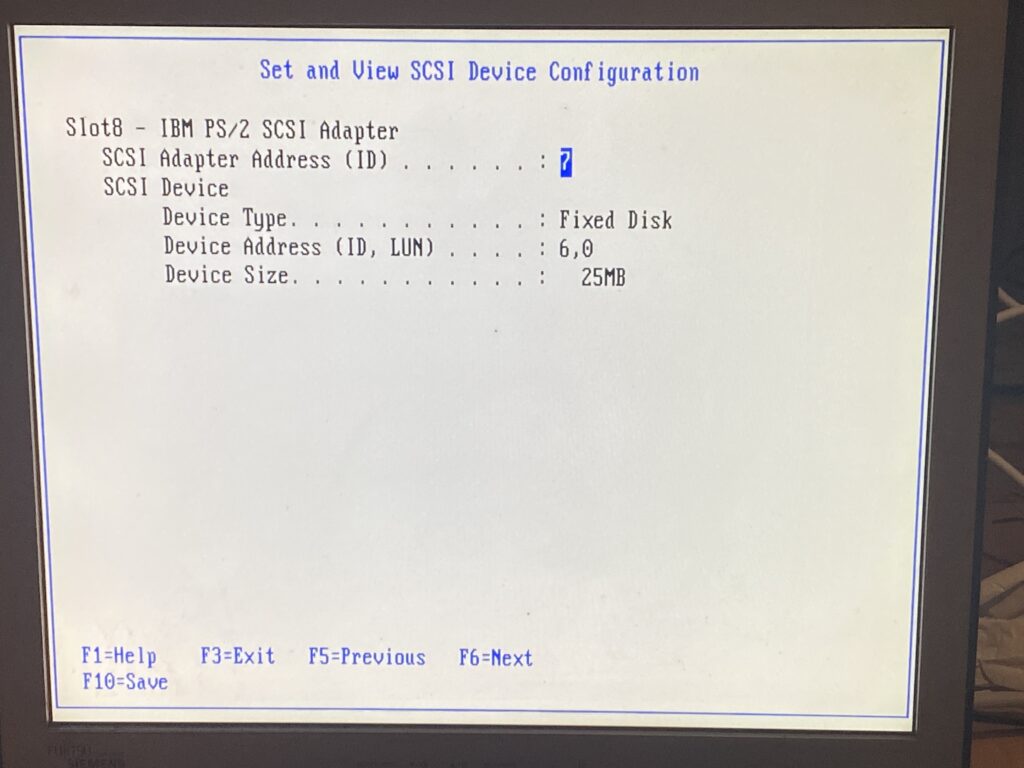
I had connected it up, and the machine saw the blue SCSI, but for some reason it was always reading 25Mb.
I was unable to figure out what was going on, so when I went to inspect my setup, I had seen one of the cables had disconnected. Uh-Oh.
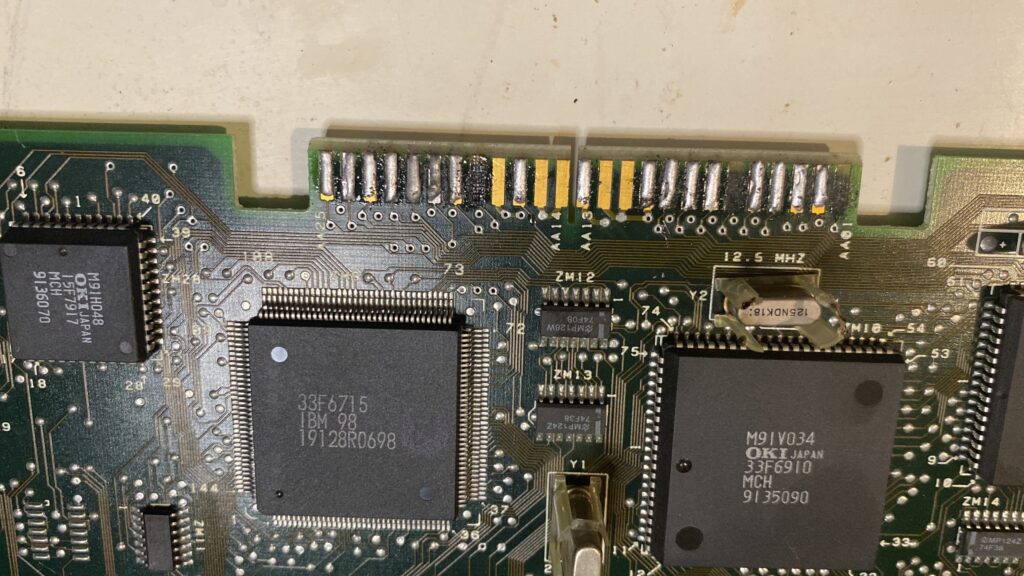
As I pulled the card out of the computer, 3 more cables had popped off, revealing that the fingers were nowhere near as strong as I had thought, and the fingers had been torn off the card. Very sad. The card still ‘works’ but it’d need someone with a good eye and soldering skills to re-attach the pads, or just solder bodge wires from the test points on the card to the IDC connector.
Obviously if I’d known the fingers were so fragile, I’d have not done this. But I was impatient for the IDC connector to arrive (it took about a month), and I really thought I could get away with it. So I don’t know if it matters for anyone else, but yeah it turns out these fingers are nowhere near as strong to side to side forcers as I had thought. Also I was told “on the internet, so you know it’s true”‘ that various super glues are conductive, so test before you think about trying to do it live.
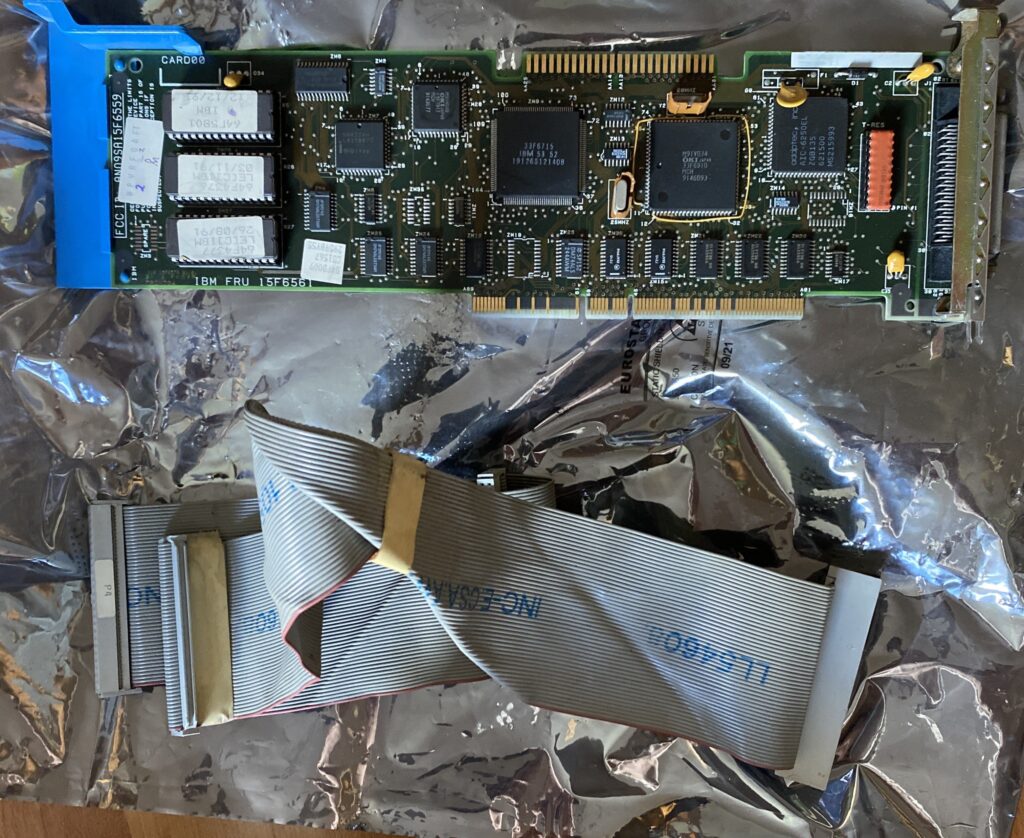
And that is when this pair showed up, another SCSI card, but this time with the illusive cable. There is something weird how the universe times things.
So got this card & cable set (If it was available 3 weeks ago, obviously I would have ordered this one as it has the ribbon!).
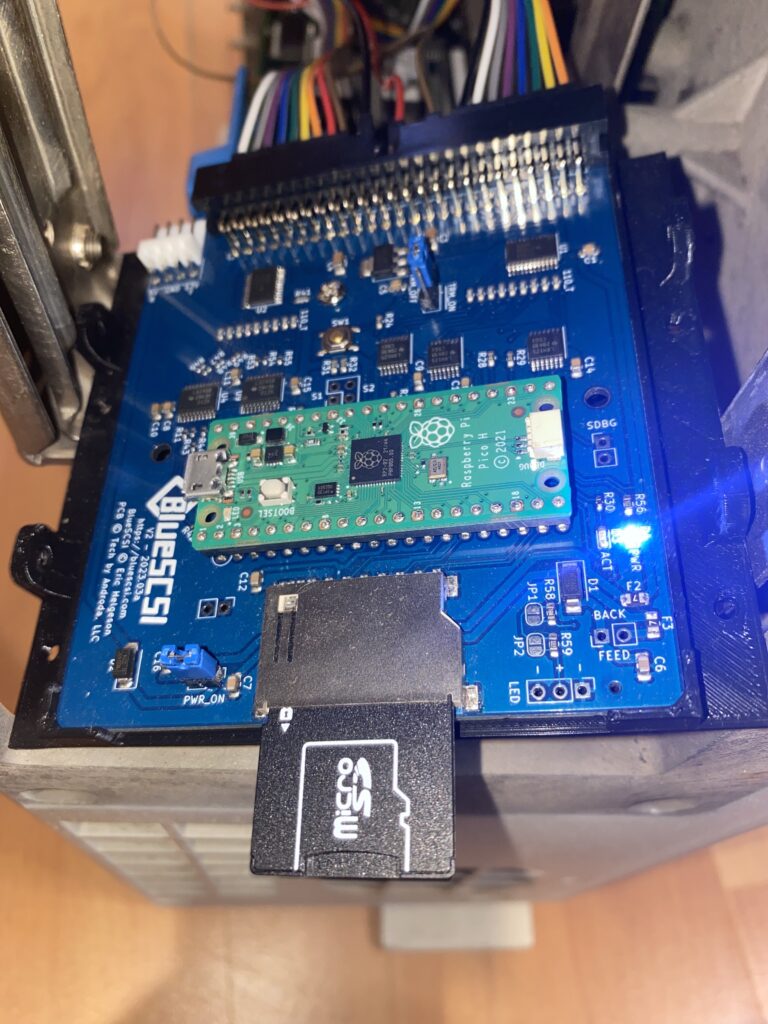
Not knowing much about the IBM PS/2 SCSI/A adapter, I went ahead in BlueSCSI, and setup a 380MB disk on SCSI ID 0, a 1GB disk on ID1, and a 2GB disk on ID2. That’s when I found out that the adapter initialises the bus backwards.
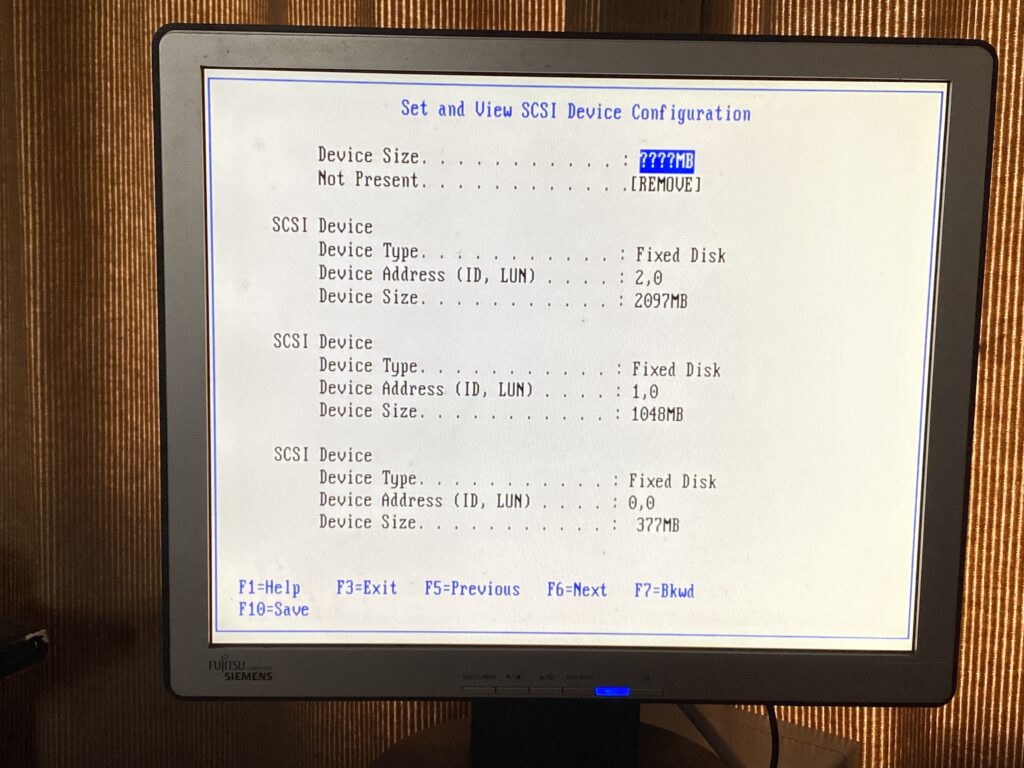
I had thought it was a weird thing in the setup utility, so I booted up MS-DOS and ran FDISK to reveal that it really does read the ID’s backwards.
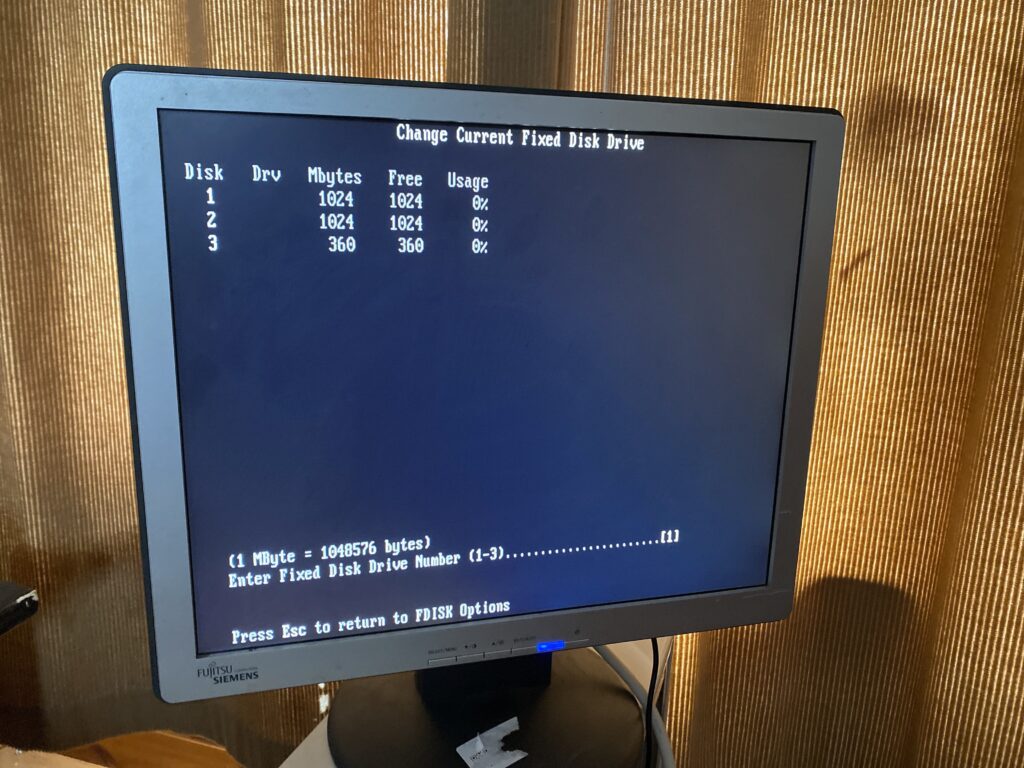
Obviously with the BlueSCSI they are just files on a SD card, so it’s trivial to just rename them.
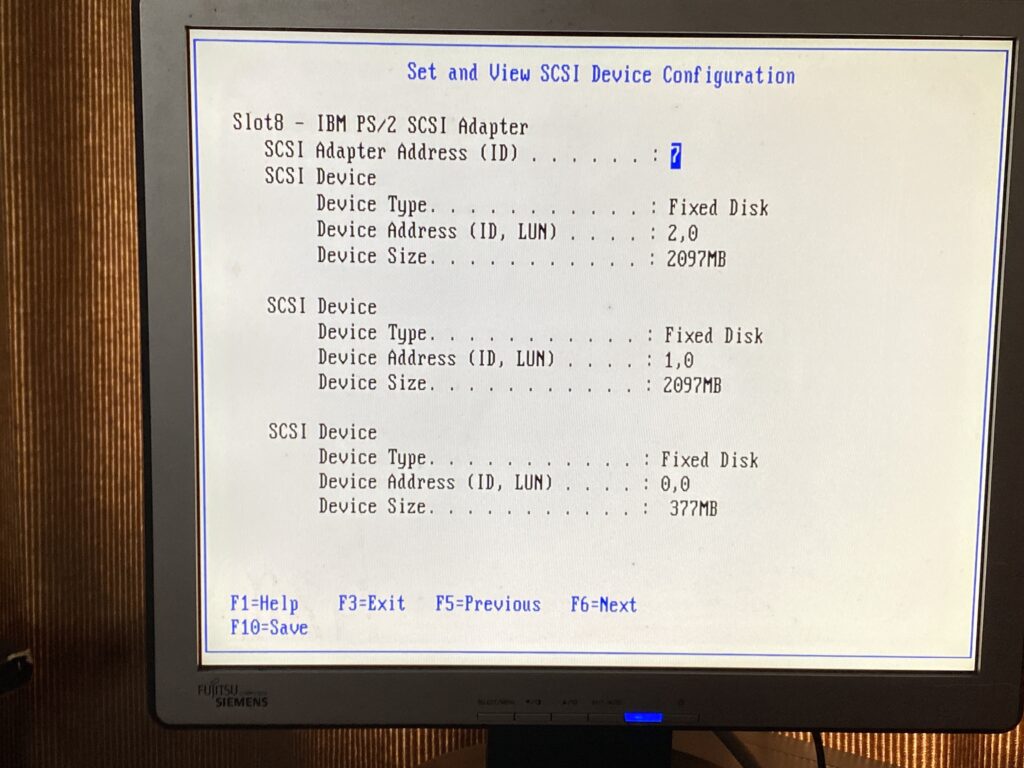
I had also thought it was weird that the reference disk reads the disks being 2GB just fine, so I double up with both data disks being 2GB.
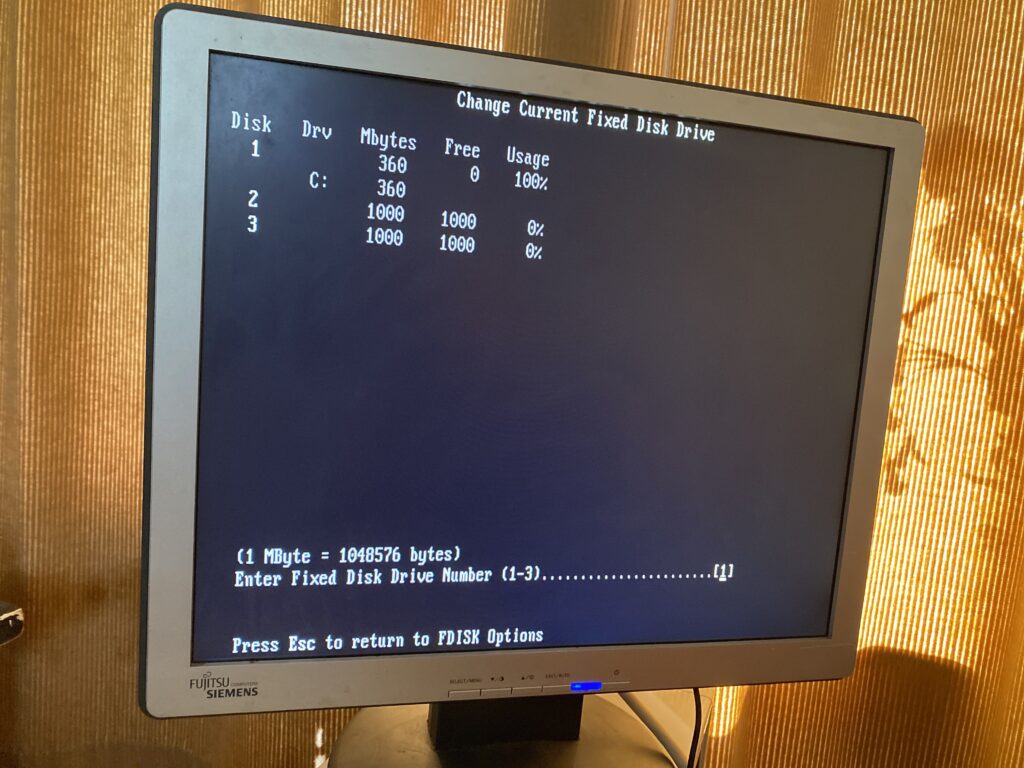
And sure enough, MS-DOS only sees 1GB per bigger disk. After search for a bit, it turns out that the 1GB limitation is a known thing and newer ROMs can work around the issue. Eagle eye’d might have noticed the first adapter had ROMs from 1990, while the second card has ROMs from 1991. But the better ROMs come from a totally different card. Normally I might have been annoyed, but since my disks are virtual I can just give myself 5x1GB data disks, along with that 360MB OS disk.
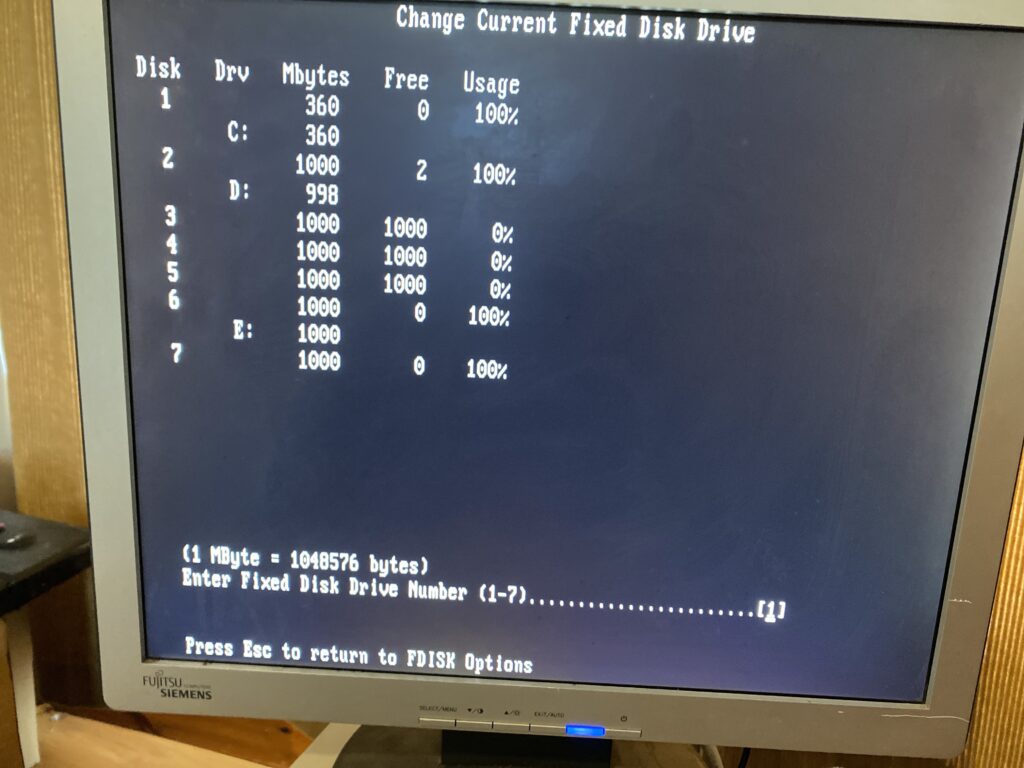
This is the best part of virtual peripherals, is that you can load out what would have been super expensive, and impractical for being era correct. Instead, now it’s super easy, barely an inconvenience. I can’t imagine trying to use physical disks in 2023.
One of the reasons I kept the smaller ‘C’ drive was to make for installing OSs a bit easier, as many older things hate ‘large’ disks. But being able to connect so many gives so much flexibility.
It’s a shame the MFM hard disk emulators are a bit expensive, even with my screwup it was still cheaper to go with SCSI, and the BlueSCSI basically just works, the only weird behaviour is all on the ‘tribble’ SCSI / A adapter.

